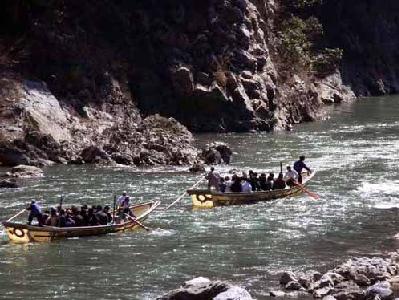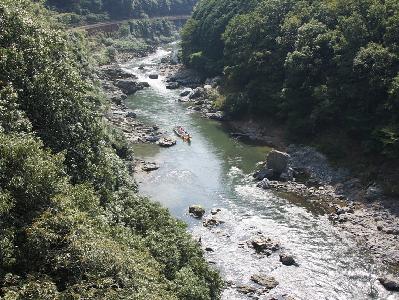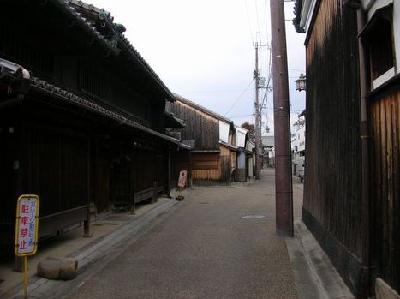|
The boat ride down the Hozu-gawa River is a 16 km, 2 hour journey through the mountains in Kyoto, from Hozu-cho, Kameoka City to Arashiyama, Kyoto City.
During the time that Nagaokakyo was the capital city of Japan (784~794), Hozu-gawa River was used to transport goods downstream to the Kyoto and Oosaka areas. It was in 1606, however, that the river was formally developed and utilized as an industrial waterway, due mainly to the efforts of Suminokura Ryoukai, who used the river to transport such local products as timber, firewood and charcoal from the Tanba region to Kyoto.
This river trip is now known, even in other countries, as the best boat ride in all of Japan.
The narrow winding course of the river produces many rapids and rocks of various shapes stud the river, providing a challenge to those steering the boats. During the trip, riders can also enjoy the echo of the paddles, sounds of the bush warbler in the valley and a chorus of kajika frogs in the summer.
With such seasonal scenic wonders as cherry blossoms, rock azaleas, lush green leaves, colorful autumn leaves and snowy landscapes, the ride down the river is pleasurable all year around.
| [+ADDRESS] | 
|














